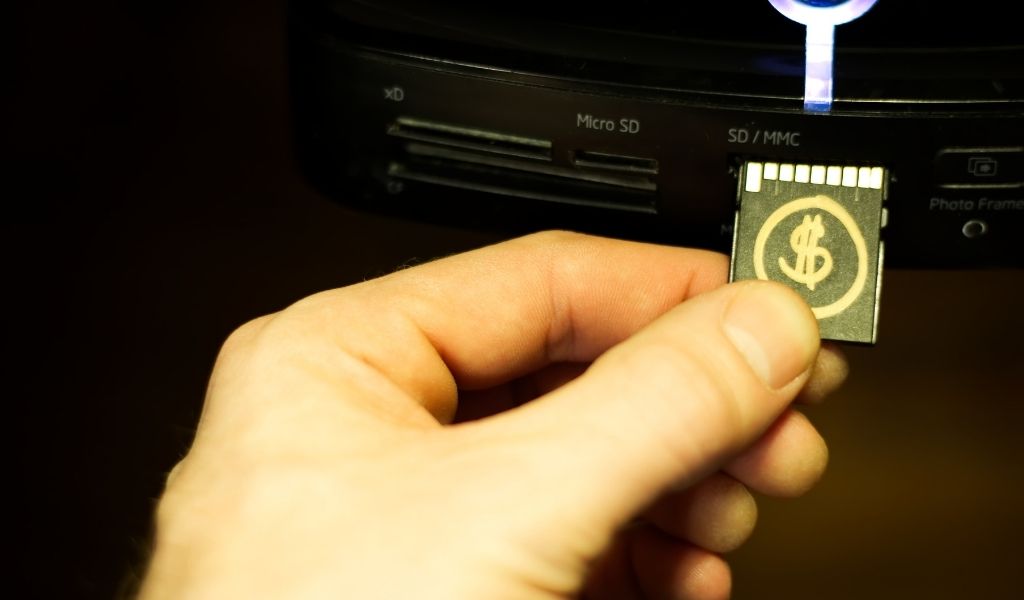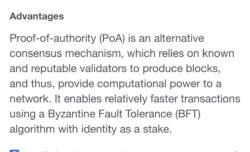Your Ultimate Guide To: Proof Of Authority (PoA) In Blockchain
Blockchain technology has taken the world by storm, revolutionizing various industries, from finance to healthcare. Among the various consensus mechanisms used in blockchain networks, Proof of Authority (PoA) stands out as an essential concept. In this ultimate guide, we will delve into what PoA is, how it works, its advantages, and its real-world applications.
Understanding Proof of Authority (PoA)
Proof of Authority is a consensus algorithm used in blockchain networks to validate and secure transactions. Unlike Proof of Work (PoW) and Proof of Stake (PoS), where miners or validators are chosen based on computational power or the number of tokens they hold, PoA relies on identity and reputation.
In a PoA system, a group of validators is selected to create new blocks and validate transactions. These validators are known and trusted participants in the network. Their identities are verified, and they have a reputation to uphold, which discourages malicious behavior.
How PoA Works
- Proof of Authority (PoA) is a consensus algorithm used in blockchain networks to validate transactions and create new blocks. Unlike some other consensus mechanisms like Proof of Work (PoW) or Proof of Stake (PoS), PoA relies on the identity and reputation of its validators to maintain the security and integrity of the network. Here’s a step-by-step breakdown of how PoA works:1. Validator Selection:
- In a PoA network, validators are carefully selected based on their identity and reputation within the blockchain community.
- Validators are often organizations or individuals with a well-established presence in the network, and their identities are publicly known and verified.
- The number of validators can vary from network to network, but it is typically a limited and known set.
2. Block Creation:
- Validators take turns creating new blocks in the blockchain. The order in which they take turns can be predetermined, ensuring a fair and predictable process.
- Each validator has the authority to propose and create a new block when it’s their turn. This is in contrast to PoW, where miners compete to solve complex mathematical puzzles to create new blocks.
3. Transaction Validation:
- As validators create new blocks, they include pending transactions in those blocks.
- Transactions are submitted by users of the network and must meet certain criteria and consensus rules to be considered valid.
- Validators validate transactions by verifying their authenticity and ensuring that they follow the network’s rules and protocols.
4. Consensus:
- Consensus in PoA is achieved when a majority of the validators agree on the validity of transactions and the order in which they should be included in the blockchain.
- Validators communicate and cooperate with each other to ensure consensus is reached.
- Transactions that receive unanimous approval from the validators are added to the new block being created.
5. Block Addition:
- Once consensus is reached, the newly created block is added to the blockchain.
- This block contains a record of the validated transactions in a chronological order.
- The blockchain maintains a continuous and immutable ledger of all transactions and blocks.
6. Rewards and Penalties:
- Validators are incentivized to act honestly and responsibly because they have a reputation to uphold.
- They are typically rewarded for their work in the form of transaction fees or newly created tokens.
- Some PoA networks may also impose penalties on validators for malicious behavior or violations of network rules.
7. Governance:
- PoA networks often have a clear governance structure that determines how decisions about network upgrades, changes, and parameter adjustments are made.
- Validators and sometimes token holders may participate in the governance process, making the network more adaptable to evolving needs.
Also, read – The Differences Between Delegated Proof of Stake And Proof of Stake
Advantages of Proof of Authority (PoA):
1. Enhanced Security:
- One of the primary advantages of PoA is its robust security model. Validators in a PoA network are well-known, reputable entities with a stake in the network’s success. Their identities are often publicly known and verified.
- This reputation-based validation system discourages malicious behavior, as validators have much to lose if they act dishonestly. It’s in their best interest to maintain the network’s integrity.
2. Energy Efficiency:
- PoA is significantly more energy-efficient compared to Proof of Work (PoW). PoW requires miners to solve complex mathematical puzzles, which consumes a substantial amount of computational power and electricity.
- PoA, on the other hand, doesn’t involve resource-intensive calculations. This makes it an environmentally friendly consensus mechanism.
3. Speed and Scalability:
- PoA networks are known for their speed and scalability. Transaction validation is quick because a limited number of validators take turns creating blocks.
- The deterministic nature of block creation and transaction validation leads to faster confirmation times, making PoA suitable for applications where speed is crucial.
4. Clear Governance:
- Many PoA networks have well-defined governance structures. Validators and sometimes token holders have a say in network upgrades and decision-making processes.
- This governance model enhances transparency and ensures that network changes align with the community’s interests and needs.
5. Resistance to 51% Attacks:
- PoA networks are highly resistant to 51% attacks, a common concern in PoW networks. In PoA, a malicious actor would need to control a majority of the validators, which is unlikely due to the reputation-based selection process.
can someone teach me what is proof of authority and is it better than proof of stake ??
— Preetham | Huddle01 (@preetham_eth) April 14, 2022
Real-World Applications of Proof of Authority:
1. Enterprise Blockchain Solutions:
- Many private and consortium blockchains designed for enterprises use PoA as their consensus mechanism. These networks benefit from the enhanced security and scalability of PoA while maintaining a level of decentralization suitable for their use cases.
2. Supply Chain Management:
- PoA has found applications in supply chain management, where tracking the authenticity and origin of products is crucial. By using PoA, supply chain networks can ensure that only trusted parties are involved in verifying and recording transactions.
3. Government and Identity Solutions:
- Some governments and organizations are exploring PoA for secure identity verification and document storage. This can be especially useful in situations where maintaining the integrity of identity records is essential.
4. Tokenized Assets:
- PoA networks are often used for tokenized assets, such as real estate or art. The reputation-based validation ensures that the ownership and transfer of these assets are secure and trustworthy.
5. Consortium Networks:
- Consortia of organizations or industry groups that collaborate on blockchain projects often employ PoA to maintain control and trust among the participants while benefiting from the efficiency of PoA.
6. Gaming and Non-Fungible Tokens (NFTs):
- Some blockchain-based gaming platforms and NFT marketplaces use PoA to ensure that in-game assets and digital collectibles are securely recorded and transferred.
Conclusion
Proof of Authority is a powerful consensus mechanism that combines efficiency, security, and governance. It is a vital component of many blockchain networks, enabling them to serve a wide range of industries and applications. As the blockchain space continues to evolve, PoA is likely to play an increasingly important role in shaping its future. Understanding PoA is crucial for anyone interested in blockchain technology, as it provides a solid foundation for exploring the diverse world of blockchain-based solutions.
Stay informed with daily updates from Blockchain Magazine on Google News. Click here to follow us and mark as favorite: [Blockchain Magazine on Google News].
Get Blockchain Insights In Inbox
Stay ahead of the curve with expert analysis and market updates.
latest from tech
Disclaimer: Any post shared by a third-party agency are sponsored and Blockchain Magazine has no views on any such posts. The views and opinions expressed in this post are those of the clients and do not necessarily reflect the official policy or position of Blockchain Magazine. The information provided in this post is for informational purposes only and should not be considered as financial, investment, or professional advice. Blockchain Magazine does not endorse or promote any specific products, services, or companies mentioned in this posts. Readers are encouraged to conduct their own research and consult with a qualified professional before making any financial decisions. The featured image used is just a creative depiction of the title and it does not intend to hurt sentiments of any person or institution. If it hurts anyone sentiments, please do not hesitate to reach out to Blockchain Magazine.

 Bitcoin
Bitcoin  Ethereum
Ethereum  XRP
XRP  Tether
Tether  Solana
Solana  USDC
USDC  Dogecoin
Dogecoin  Cardano
Cardano  Lido Staked Ether
Lido Staked Ether  TRON
TRON  Wrapped Bitcoin
Wrapped Bitcoin  Chainlink
Chainlink  Wrapped stETH
Wrapped stETH  Avalanche
Avalanche  Sui
Sui  Stellar
Stellar  Toncoin
Toncoin  Hedera
Hedera  Shiba Inu
Shiba Inu  LEO Token
LEO Token  Hyperliquid
Hyperliquid  Litecoin
Litecoin  Bitget Token
Bitget Token  USDS
USDS  WETH
WETH  Polkadot
Polkadot  Bitcoin Cash
Bitcoin Cash  Ethena USDe
Ethena USDe  Wrapped eETH
Wrapped eETH  Uniswap
Uniswap  MANTRA
MANTRA  Ondo
Ondo  Pepe
Pepe  Monero
Monero  Aave
Aave  WhiteBIT Coin
WhiteBIT Coin  NEAR Protocol
NEAR Protocol  Mantle
Mantle  Official Trump
Official Trump  Dai
Dai  Aptos
Aptos  Internet Computer
Internet Computer  Ethereum Classic
Ethereum Classic  Bittensor
Bittensor  OKB
OKB  Cronos
Cronos  POL (ex-MATIC)
POL (ex-MATIC)  Gate
Gate 





